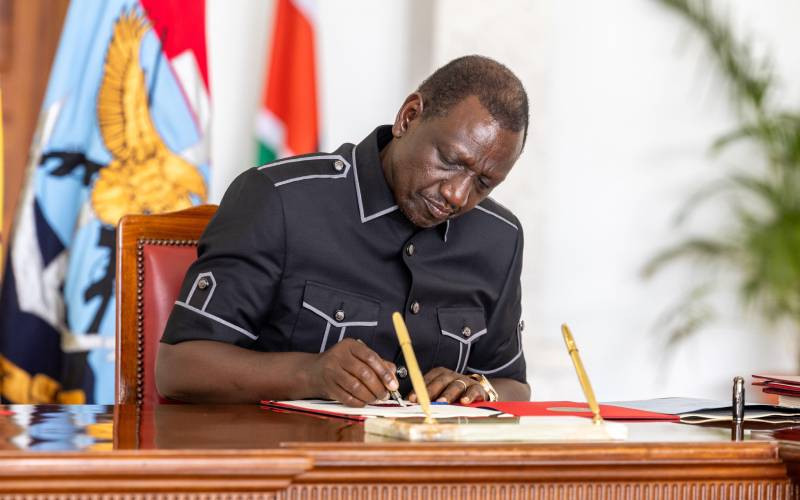
By Thorn Mulli
[email protected]
Kenya: In 1898, the dashing British adventurer, Ewart ‘The Leopard’ Grogan was headover- heels in love — but he needed the approval of his beloved’s sceptical, aristocratic stepfather.
To prove his worth, the 24-year-old Cambridge dropout set out on an epic quest to become the first person to walk the length of Africa, “a feat hitherto thought by many explorers to be impossible” (New York Times).
One cannot study Kenya’s colonial history and fail to encounter Colonel Ewart Scott Grogan’s indelible legacy. Regarded by the settler community as ‘Kenya’s Churchill’ for his ingenuity, and nicknamed ‘Bwana Chui’ by the Kikuyu for his ruthlessness, the colonel was both loved and loathed in equal measure.
Grogan had a dark side. A proponent of the introduction of apartheid in Kenya, heat one time stood trial for the death of two Africans, whom he had allegedly flogged to death in full view of a magistrate and a police superintendent.
But, his errs aside, Grogan had a lot of feathers in his hat. His main claim to fame was the incredible trek from Cape Town to Cairo, which he undertook to impress the family of a Miss Gertrude Coleman-Watt, with whom he had fallen in love.
Gertrude was the sister of a Cambridge classmate, and her stepfather disapproved of the match.
After two and a half years of flirting with dangerous tribes and animals, tropical diseases and low supplies, Grogan reached Cairo aged 26. He returned home a popular sensation, penning a bestseller
From the Cape to Cairo; the first traverse of Africa from south to north (1902). His exploits led to his being made a fellow of the Royal Geographic Society, and to cap his success, he got the girl of his dreams.
They were married and had four children, leaving London to settle in South Africa.
In 1904, Grogan returned to Kenya. His first home was a tent, after which he put up Grogan Palace and Grogan Lodge on the site that is now the Chiromo complex.
He named the area ‘Chiromo’, Malawian for ‘joining of streams,’ as the two joining rivers reminded him of a Malawian village where he lost his luggage during his trek.
He sold the property to American millionaire Lord Northrop McMillan, the man after whom Nairobi’s McMillan Library is named. The palace was later moved from Riverside Drive to the Karen Blixen Coffee Garden as the Grogan/MacMillan Manor House.
Stay informed. Subscribe to our newsletter
Grogan always thought big, and thanks to an immense fortune, he was able to accomplish many of his grandiose ideas. He was one of the settlers with the most land; at least half a million acres that included Grogan, now Kirinyaga, Road.
He founded the Kenyan timber industry, played a part in building Kenya’s first deepwater port at Mombasa, built Torr’s Hotel in Nairobi, and stocked Kenya’s rivers with imported trout, among other firsts.
He was not short of romantic gestures either. When Gertrude passed on in 1943 after a short stint as president of East Africa Women’s League, he donated his house and grounds in Muthaiga for the establishment of Gertrude’s Garden Children’s Hospital, in her honour.
One of his lesser-known gestures, however, is the castle he built for her; The Grogan Castle. This castle is about 20km southwest of Taveta town on the Kenya-Tanzania border, in the Lake Jipe Estate.
Taveta area is well documented for its historical position during the First World War between the English and the Germans. It is also in here where Grogan distinguished himself in both World Wars, fighting behind enemy lines.
Owning large tracts of sisal farmland in the area, it is rumoured that he influenced the bulge of the boundary line with Tanzania from Rombo to ensure all his land was accommodated on Kenyan side.
Grogan built the castle in the 1930s, and lived in it until the late 1950’s. Located atop a hill, the castle offers 360-degree views, including sights of Mt Kilimanjaro, Pare Mountains, Tsavo West National Park, and the nearby Lake Jipe.
The part monastery, part Moorish fort and part hacienda architecture with English- inspired decor was approached via a road that snaked its way up the hill. Visitors were deposited at the foot of broad steps leading to an arch in which wroughtiron entrance gates were later set.
Beyond the gates was a central courtyard with a fountain and flowerbeds. It boasted five large en suite bedrooms with a similarly spacious guest cottage.
Sadly, Grogan died on August 16, 1967, in a small fl at in Rondebosch, South Africa despite his wish to spend his last days at the Castle.
Today, Grogan’s Castle is a boutique hotel owned by former area legislator Basil Criticos, who undertook renovations, keeping to the original theme and fittings, before opening it to the public in 2008. It is accessible by both air and road from the capital.
 The Standard Group Plc is a
multi-media organization with investments in media platforms spanning newspaper
print operations, television, radio broadcasting, digital and online services. The
Standard Group is recognized as a leading multi-media house in Kenya with a key
influence in matters of national and international interest.
The Standard Group Plc is a
multi-media organization with investments in media platforms spanning newspaper
print operations, television, radio broadcasting, digital and online services. The
Standard Group is recognized as a leading multi-media house in Kenya with a key
influence in matters of national and international interest.
 The Standard Group Plc is a
multi-media organization with investments in media platforms spanning newspaper
print operations, television, radio broadcasting, digital and online services. The
Standard Group is recognized as a leading multi-media house in Kenya with a key
influence in matters of national and international interest.
The Standard Group Plc is a
multi-media organization with investments in media platforms spanning newspaper
print operations, television, radio broadcasting, digital and online services. The
Standard Group is recognized as a leading multi-media house in Kenya with a key
influence in matters of national and international interest.









